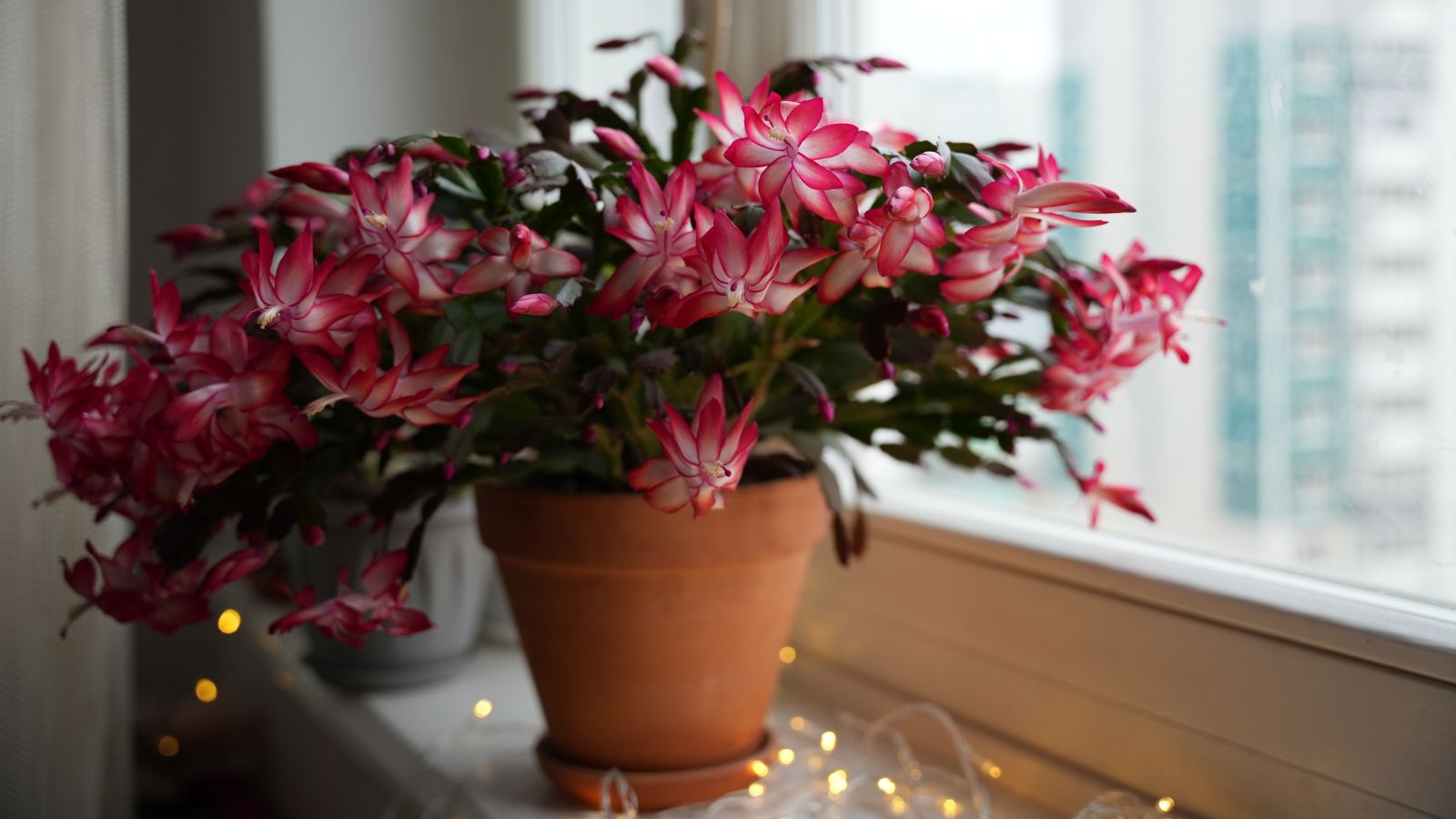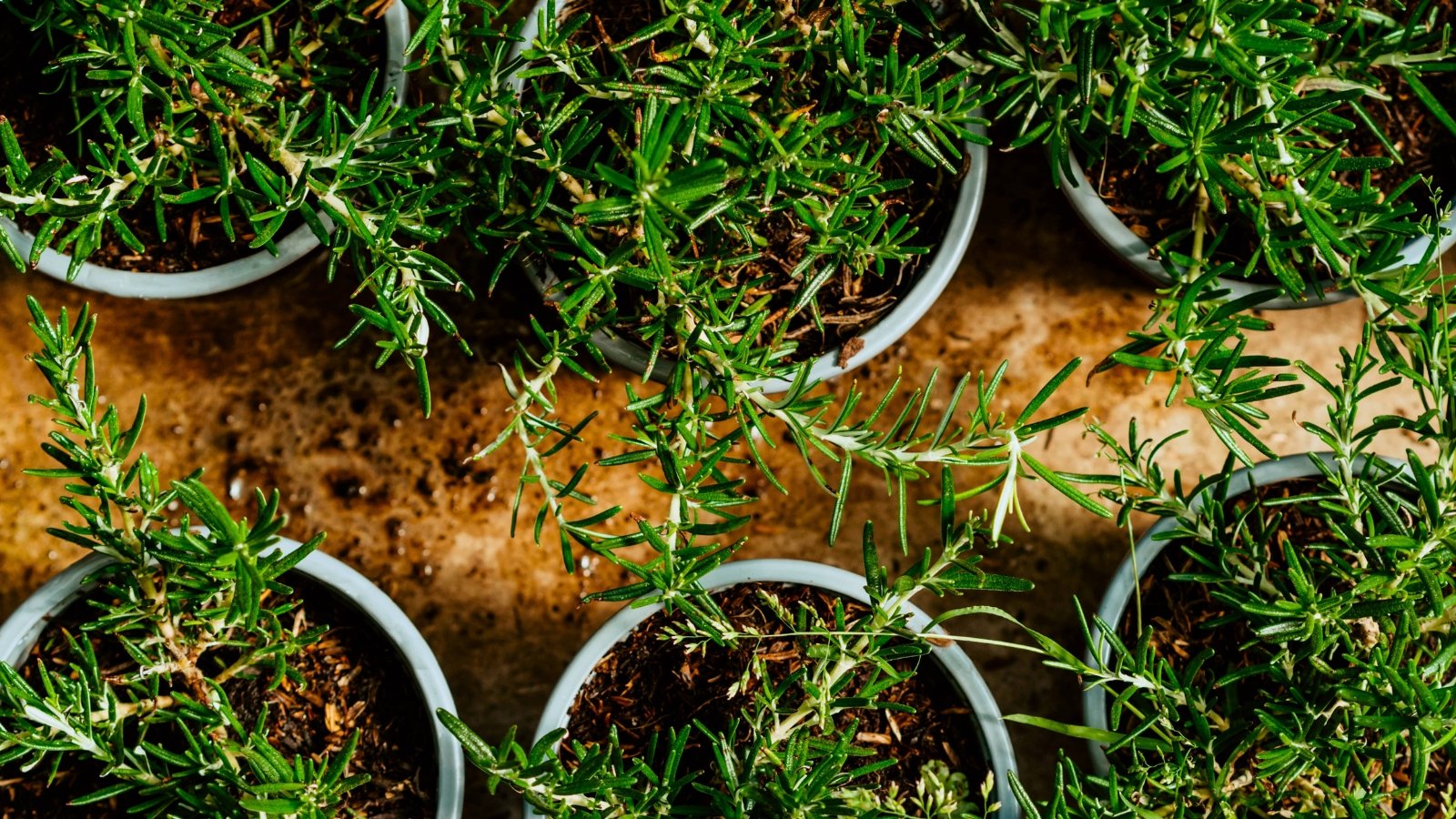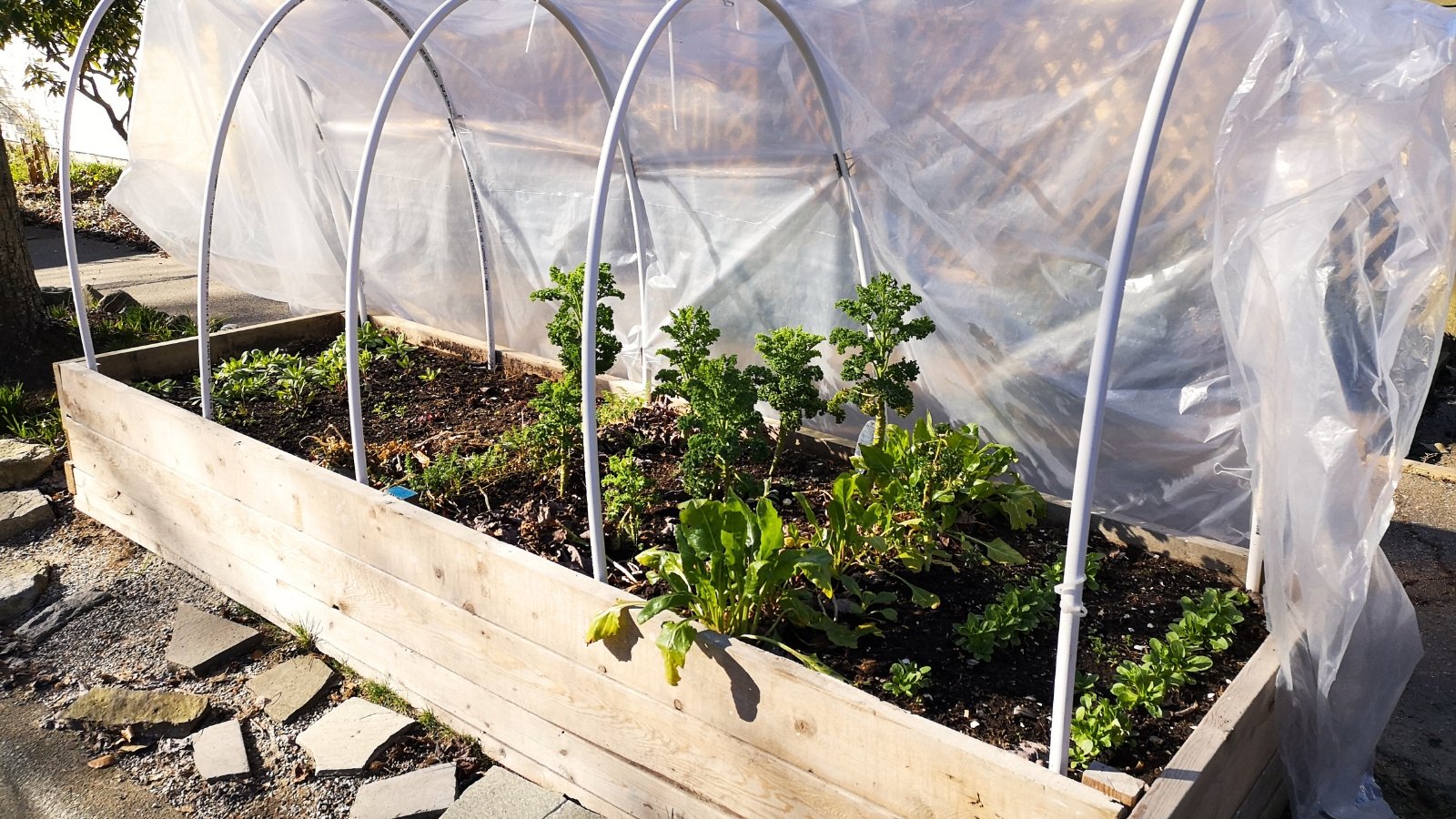PROTECT YOUR DNA WITH QUANTUM TECHNOLOGY
Orgo-Life the new way to the future Advertising by AdpathwayYour tomato seeds sprouted and they’re growing strong, but do they need any extra nutrients before they go in the ground? Former organic farmer Logan Hailey has all the information you need to properly fertilize tomato seedlings.

Written by Logan Hailey Horticulture review by Sarah Jay Last updated: March 17, 2025 | 4 min read

Starting seeds is the highlight of spring gardening. Once you choose the right seed starting mix, the best trays, and your favorite varieties, the process is pretty simple. But after seedlings sprout, you may be wondering if they need more nutrients to keep them going.
Tomatoes are known as heavy-feeders in the garden, and these fast-growing plants suck up a lot of nitrogen and phosphorus in their early days as they develop lush foliage and strong roots. However, fertilizing them too soon or too late can be problematic for later growth.
Let’s dig into whether or not you should fertilize tomato seedlings and the best products to use.
Vegetable Fertilizer

All-Purpose Vegetable Fertilizer
Tomato-tone Plant Food

Espoma Organic Plant Food (4 lbs.)
Worm
Castings

Urban Worm Company Worm Castings
The Short Answer
Most healthy tomato seedlings do not need fertilizer until they are going to be transplanted into the garden. Many seed-starting mixes already contain sufficient nutrients for seedling growth, so you may not need to add anything additional if the blend already includes sources of N-P-K, micronutrients, and organic material like compost. However, if seedlings are yellow or pale, nutrient additions may be helpful.
Never fertilize tomato seedlings right after they sprout, as they still have the necessary nutrients from the seed endosperm and they are vulnerable to nutrient burn. Instead, wait until the young plants have two to three sets of true leaves. These are the leaves that develop after the initial moon-shaped baby leaves called cotyledons.
At this point, you can side-dress with a slow-release balanced organic fertilizer or diluted liquid organic fertilizer. Avoid synthetic nitrates or quick-release products that may burn the fragile young plants. Balanced products have almost equal rates of N-P-K such as 4-4-4.
The Long Answer
 Fertilize transplants with granular amendments in planting holes once they have strong foliage and root growth.
Fertilize transplants with granular amendments in planting holes once they have strong foliage and root growth.It is most common to fertilize tomatoes at the time of transplanting when seedlings already have robust foliage and root growth. You can sprinkle granular amendments into the planting hole and water to promote uptake.
If the seedlings show signs of yellowing or pale foliage before transplanting time, it may help to add diluted liquid fish emulsion or another gentle, organic nutrient solution. Here are more details about how and when to fertilize tomato seedlings.
Sources of Nutrients in Seed-Starting Mix
 Blends with coco coir, peat, vermiculite, and perlite often lack nutrients to support plants beyond cotyledons.
Blends with coco coir, peat, vermiculite, and perlite often lack nutrients to support plants beyond cotyledons.Most soil blends contain mixes of plant nutrients, including nitrogen, phosphorus, potassium, and micronutrients. If your mix contains any of the following ingredients, you probably won’t need to fertilize your tomato seedlings until they are larger and ready to go in the ground:
- Compost
- Rotted manure
- Worm castings
- Fish meal
- Seaweed or kelp
- Feather meal
- Calcium shell
- Bone meal
- Blood meal
- Guano
- Mycorrhizal fungi
- General organic fertilizer
You may notice phrases like “enhanced with…,” nutrient-rich,” or “amended with organic fertilizer” that indicate minerals have already been added to the blend. If the mix contains only ingredients like coco coir, peat moss, vermiculite, and perlite, then it likely lacks enough nutrition to support developing plants past the cotyledon stage.
Signs That Seedlings Need Fertilizer
 Nutrient-rich mixes with compost or worm castings delay the need for feeding until transplant time.
Nutrient-rich mixes with compost or worm castings delay the need for feeding until transplant time.Yellowing, pale foliage is the first sign that young tomatoes are deficient in some nutrients. The leaves may also turn purple or brown and fall from the plant. Slow, stunted growth may also be apparent if there is a lack of nitrogen in the soil.
However, you must be careful not to mistake signs of malnutrition for other common issues. Overcrowded seedlings and disease issues can cause similar symptoms. Check your seed starting mix ingredients first, and then eliminate other issues before proceeding with fertilizer.
How to Avoid Nutrient Burn
 Pale, yellow, or purple leaves with slow growth can signal nutrient deficiencies, overcrowding, or disease.
Pale, yellow, or purple leaves with slow growth can signal nutrient deficiencies, overcrowding, or disease.Nutrient burn is the most common issue with fertilizing tomato seedlings. This can lead to browning, yellowing, curling leaves, wilting, stunted growth, and even death. Tender young plant tissues are vulnerable to nutrient burn from harsh fertilizers, so it’s crucial to be very careful when applying plant food to seedling trays.
The easiest ways to avoid nutrient burn include:
- Choosing slow-release fertilizer
- Opting for all-purpose organic products
- Avoiding synthetic products, especially nitrates
- Avoiding raw or un-composted manure
- Diluting liquid products before application
- Mixing in only small sprinkles at a time
- Watering thoroughly to prevent concentrated nutrients in the root zone
Best Fertilizers for Tomato Seedlings
 Use organic granular fertilizer, worm castings, or composted manure sparingly, always following package instructions.
Use organic granular fertilizer, worm castings, or composted manure sparingly, always following package instructions.The best products for young plants are organic, slow-release, and balanced.
- Organic: Naturally occurring materials slowly release nutrients into the soil instead of providing a sudden blast of nutrients, which can lead to fertilizer burn. These earth-derived materials are gentler on young plant roots and require microbial breakdown before they are available for uptake. Examples include compost, worm castings, kelp and fish blends, feather meal, and bone meal. Look for the OMRI “Approved for Organic Production” seal.
- Slow-Release: Gradually-released fertilizers are generally organic in nature. They must pass through the metabolism of soil microbes before the plant can use them. This means they are slowly released into the soil in smaller amounts over a longer period of time. In contrast, synthetic products are almost instantly available for roots to uptake, meaning the seedlings can rapidly suck up too many nutrients at once.
- Balanced: The ratio of nutrients in a fertilizer is balanced if the numbers appear close together. Nitrogen, potassium, and phosphorus (N-P-K) are the standard macronutrients listed on the outside of plant food bags. These numbers describe the ratio or percentage of each nutrient in the blend. For a blend to be balanced, the numbers should be close together, such as 4-4-4 or 10-10-9. If the numbers are very imbalanced, such as 9-0-0, then the fertilizer may cause nutrient burn and deficiency in the young plants.
All-purpose organic granular fertilizer, Garden-tone organic plant food, worm castings, composted manure, and diluted organic liquid tomato plant food are all great options. Be sure to follow package instructions closely. When in doubt, remember that less is more.
Use smaller amounts of fertilizer than you think you need to ensure that you don’t damage your seedlings. You can always add more later! Water thoroughly after application to ensure uptake. Add a large flush of water or transplant to new soil if you think you’ve overfertilized.
Key Takeaways
In summary, you don’t typically need to fertilize tomato seedlings until it is time to transplant them into the garden. Newly germinated sprouts get plenty of nutrients from their seed endosperm, and young seedlings can source nutrition from the seed-starting soil blend. Once several pairs of true leaves start to appear, take note of their appearance. If they are yellow, brown, or stunted, it may be time to add a gentle plant food product. Opt for organic, balanced, slow-release blends to prevent nutrient burn.
Learn to grow.
Sign up for weekly gardening tips, product reviews and discounts. When you sign up, you agree to our privacy policy.

How to “Brush” Your Seedlings For Stronger Stems
Brushing seedlings may seem like extra work, but it’s a valuable practice for growing strong, resilient plants. Though they have protection indoors, they lack exposure to natural conditions like wind, rain, and temperature shifts. Join seasoned gardener Jerad Bryant and learn how to use this practice for healthy, robust specimens.

5 Heat Mat Mistakes to Avoid When Starting Seeds This Season
Ensure that your heated germination mat enhances seed starting rather than hindering it. In this article, former organic farmer Logan Hailey explains the most common mistakes and how to avoid them so you can grow strong, healthy seedlings.

Best Beginner Vegetables: 11 Easy Crops to Grow from Seed
If you’re used to buying seedlings from a nursery, sowing vegetables from seed can be intimidating! However, watching veggies transform from tiny seeds to harvestable crops is rewarding. Join vegetable farmer Briana Yablonski to learn easy crops perfect for beginners.

Seed-Starting 101: 11 Tips to Get it Right
Seed starting doesn’t have to be complicated. A few simple steps can ensure prolific germination and vigorous early growth to start your season off right. Join organic farmer Logan Hailey for 11 straightforward seed-starting tips for beginners.

7 Tips for Preventing Spindly Vegetable Seedlings
Leggy, spindly seedlings are heartbreaking to see. You planted seeds hoping to grow strong, healthy plants and now have to deal with elongated weak ones! Fear not, as some simple tricks turn these leggy specimens into robust seedlings. Seasoned grower Jerad Bryant shares these seven expert tips for preventing spindly veggie starts.

Get Year-Round Tomato Harvests With This One Growing Strategy
Do you love growing tomatoes and dream about having them year-round? With one simple and effective strategy, you can enjoy them throughout the year. In this article, plant expert Matt Dursum shows you the steps to this easy tomato-growing strategy.


 7 months ago
75
7 months ago
75





















 English (US) ·
English (US) ·  French (CA) ·
French (CA) ·